My Dad was featured in the Wall Street Journal last month. That’s right, I’m basically the daughter of a celebrity.
He and several other farmers in Central Kansas (like my high school classmate Mason!) were interviewed for the article: The Next American Farm Bust is Upon Us. Unfortunately, the tone of the article was less than positive; apparently I wasn’t the only one who noticed the piles of grain across my home state last summer and it’s not an illusion that the low price of grain is going to force some farmers out of business.
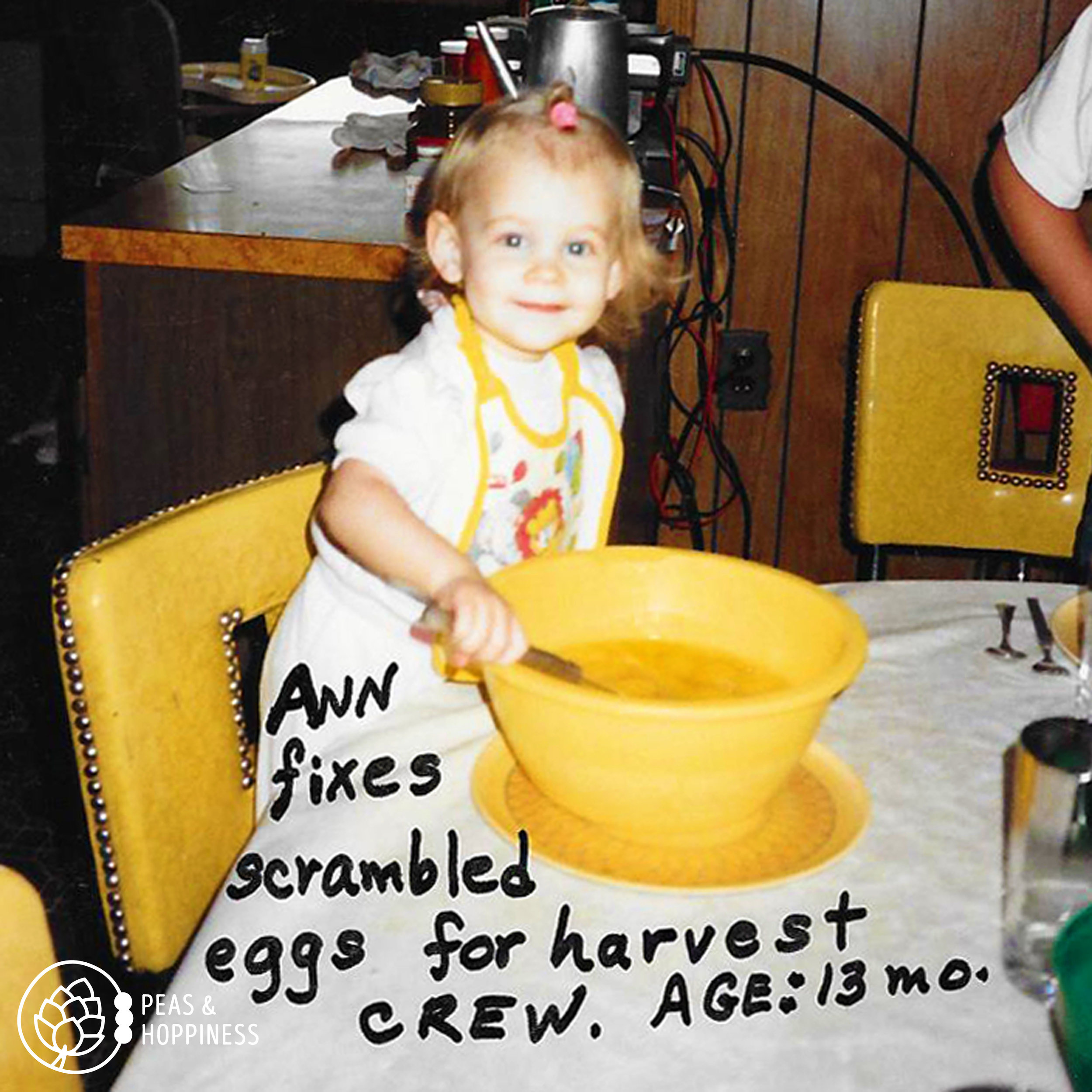
Baby Ann, the next generation of dietitians for the American farmer 😉

Young Ann with one of the real next generation of American farmers, Janna. Although we’re dressed as movie stars for Halloween in this photo, she and her husband now farm in Central Kansas.
This begs the question: How will American Agriculture respond to this changing climate?
Every major industry in the U.S. has made the shift from local to national in the last 100 years with the globalization of the market. If not, they’ve either found a way to specialize or have gone out of business. For example: healthcare, retail chains, grocery stores, airlines, and banks. No longer can the mom & pop nickel and dime store survive (unless they have a specific niche and excellent marketing – see point #2). Instead, the Wal-Marts of the world ran them out of town by pure (and highly efficient) business strategies. Happy capitalism, ya’ll!
Let’s take a look at the future of agriculture.
Response #1: Go Big or Go Home
This isn’t quite accurate; it’s more like – “Get efficient or get out.”
Family farms are either becoming more efficient and streamlined (and usually bigger) or they are going out of business. With grain prices low and cost of inputs high, profits are razor thin – so thin that if you’re not big enough or precise enough, you’ll be bleeding money (basically the point of the WSJ article).
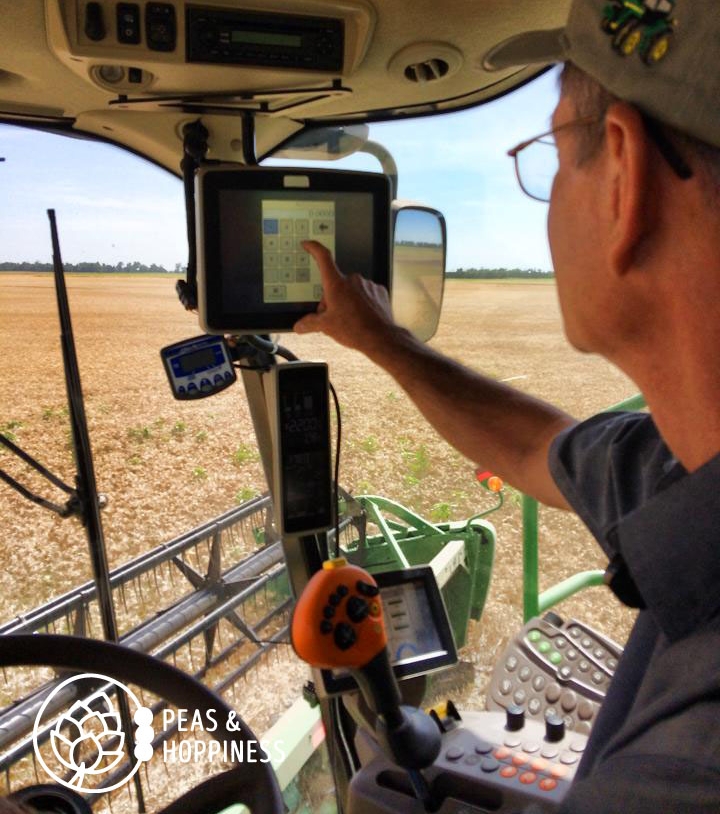
Dad resetting track spacing for auto guidance in the combine while cutting wheat – one of the precision agriculture tools he uses to improve efficiency
There isn’t a one-size-fits-all approach as to how this actually plays out, but key points include:
-
Risk Management: There are many, many risks in farming – weather patterns, pests that could destroy your crop, grain price fluctuations, etc. Thus, learning to mitigate risk via a variety of different methods (see: Rained Out post about risk management) is essential to actually turn a profit.
-
Precision Agriculture: Essentially, this means a farmer must be really good at his job to survive. Precision agriculture is a term that refers to how a farmers uses technology (such as GPS data, variable rate seeding based on yield, and variable rate application of fertilizer) to improve the profit margin. Farmers must minimize inputs while maximizing outputs in order to turn a profit in an economy with low prices and lots of competition.
-
Reigning in Family Expenses: This variable is larger than most people give it credit. Because of the nature of farming, some years will be excellent with high yields and good prices; other years will be exceedingly lean (see: post on Volatility). If you’ve ever spoken with a financial adviser, he’ll tell you how difficult it is for someone to pull back on spending once they have experienced luxury living. The ability to tighten one’s belt when income is less than previous years (and not overspending during the good times) is one of the most important skills a farmer needs.
-
Excellent Management Skills: Yes, farming is a business. It requires resource management (labor, time, budgeting) and excellent record-keeping (taxes, payroll, inventory). It not only requires knowledge of farming (when to plant, how to decide how much and what type of fertilizer to use), but also how to prioritize tasks. What should come first if there is a field to plant, a field to harvest, and a field that needs to be sprayed for weeds – but there are only two people to do the three tasks?
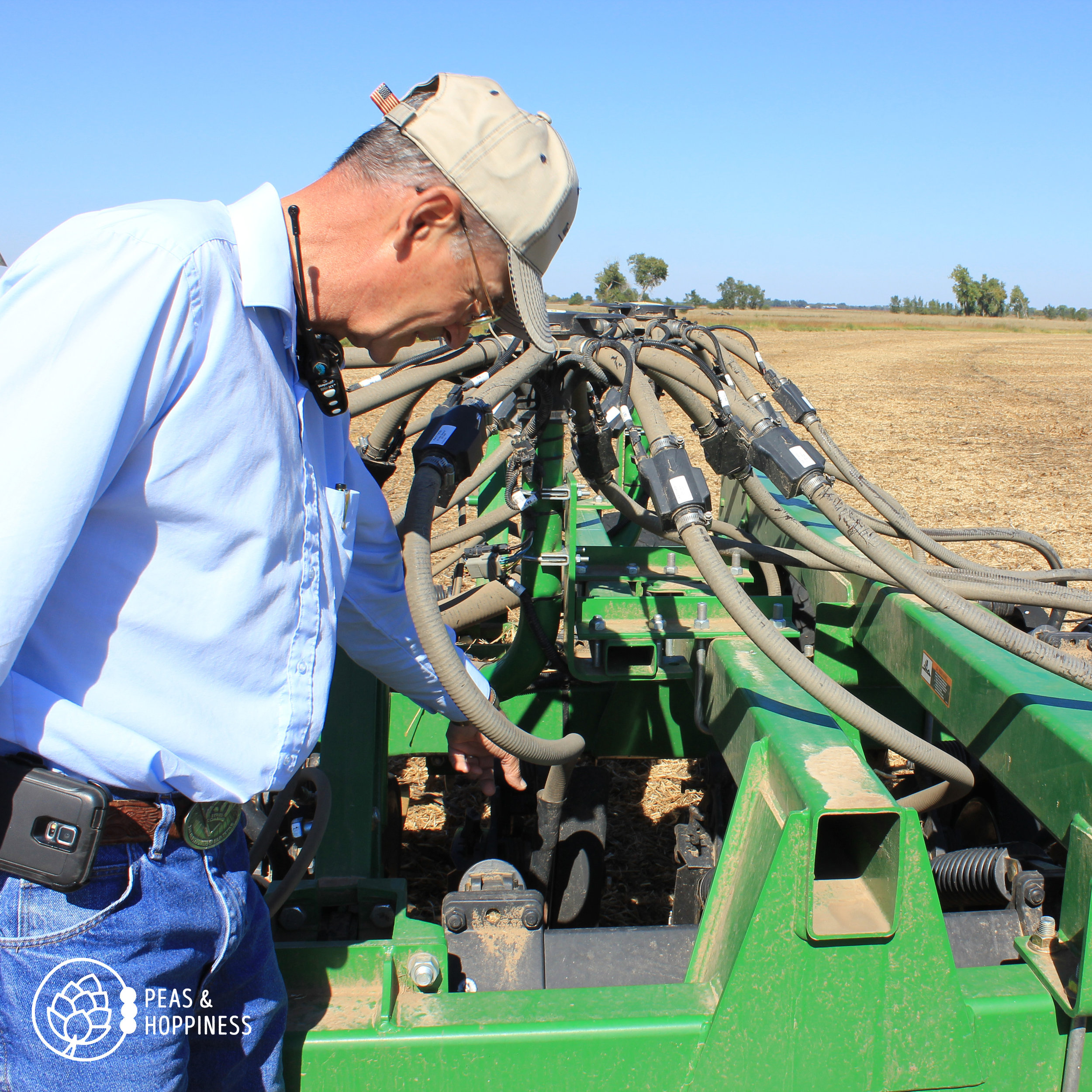
Dad explaining the workings of the air-seeder, used to plant soybeans, grain sorghum, and wheat, among other grains
All of this is harder (and more expensive) than it sounds. Not every farmer has had the opportunity to pursue precision agriculture and sometimes one family emergency can cost far more than what the budget allows. The bar of excellence continually moves and what it takes to be a successful farmer is increasingly difficult. Thus, for farmers who have not had the resources to become the best of the best, they fall into one of the two next response categories.
Response #2: Niche Markets
Local. Organic. All-Natural. Grass-fed. There are some farmers who have broken away from the traditional agricultural system, and while some people pursue these labels based on moral beliefs, there is also an economic incentive at the heart of these claims.
If the competition is too fierce and you find yourself a small fish in a bigger and bigger pond, maybe you should switch ponds.
This is how niche markets have created new opportunities for farmers. At the same time as these markets have emerged, the conversation about agriculture in America has started to shift. Consumers wonder where their food comes from and farmers are starting to change to meet demand.
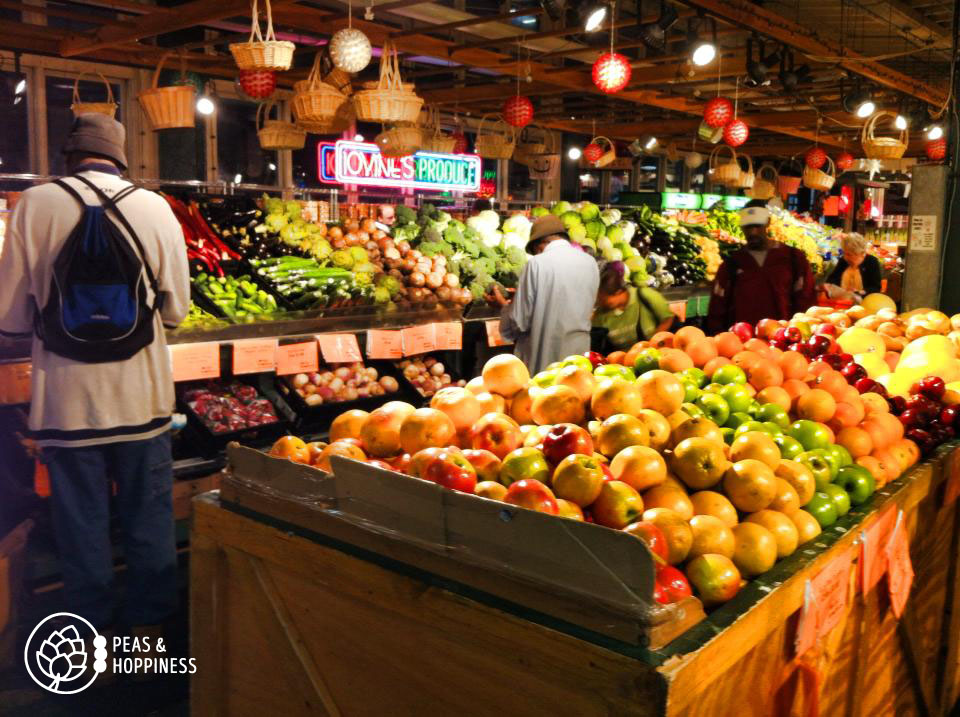
Incredible farmers’ market in Philadelphia. We found the BEST locally made brie. So good!
This has opened up a variety of different niche markets:
-
Community Supported Agriculture (CSAs): These programs are a way to link local farmers directly with their community. In Northern Colorado, my friend Melaney’s family runs a full-time large-scale vegetable farm. They sell their produce at farmers’ markets or you can buy into their farm for the season, which is called a CSA. A CSA works by allowing consumers to purchase a share of the farm, which then guarantees a basket (or bushel or box) of food every week. Consumers receive what happens to be in season at that time of year.
-
Organic: Increasingly popular, organic is now a large enough market that it is essentially mainstream. Unlike other buzzwords such as local or all-natural, the term “organic” has a specific set of guidelines set by the Food & Drug Administration with which farmers must comply in order to define their product. There is significant controversy about whether or not organic products are safer, healthier, or better for the environment, but there is not a clear conclusion.
-
Local, Grass-Fed, All-Natural: The list of buzzwords goes on and on, although the definitions aren’t clear. It’s great to support local producers; supporting small business tends to recirculate money back into the community as compared with spending at large chain stores (read more about The Multiplier Effect of Independent Business). However, there is no clear definition of what “local” means. Is it grown in your county? In your state? In the country? It is a big country, after all. And “grass-fed”? Actually, all cattle are grass-fed up until the last four months of life (with some supplementation of hay/grain if there isn’t enough grass, such as in the winter). There is no definition of “all-natural.” Corn syrup comes from a plant, thus it would be “natural,” right? It’s similar to sugar in this respect. Are those foods healthy? The point is, many nutrition “buzzwords” are used as a marketing ploy, but are essentially meaningless; it’s tough to be a savvy consumer these days!
-
Community Gardens: Though not necessarily profitable, the popularity of gardening in urban areas is increasingly popular. In fact, I have several friends who work with or for organizations who work to grow gardens in abandoned city lots, plant orchards (or fruit trees) in the city, or help maintain school gardens. Other friends of mine simply belong to their local community garden and rent a plot, plant veggies in the summer, and enjoy their local harvest. Local gardening is a great way to incorporate fresh, delicious, and healthy produce into your diet.
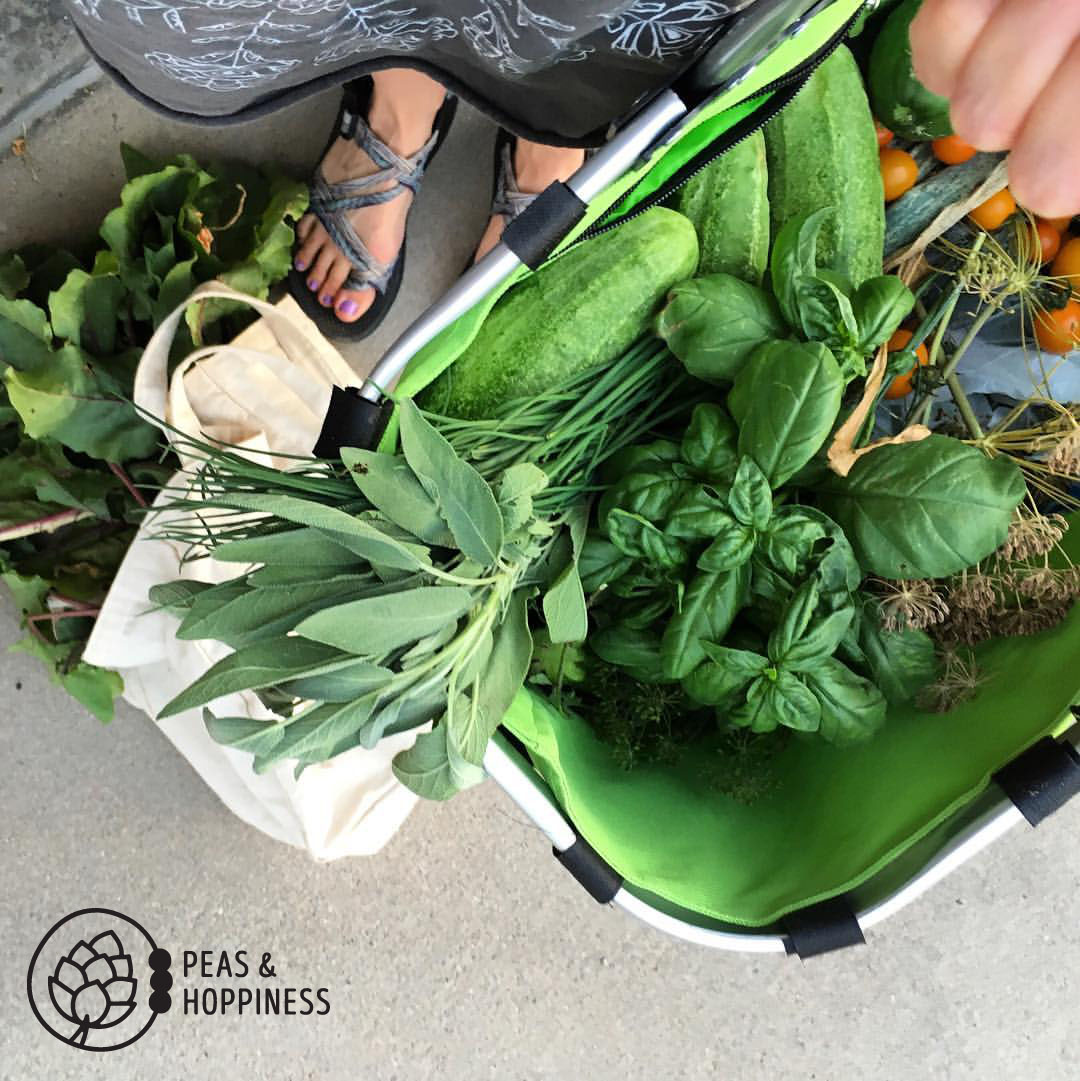
Fresh produce from my friend’s garden: dietitian Heaven!
I think it’s fantastic that people are asking more questions about food and becoming more interested in where it comes from. It’s also important to remember that not all niche farmers are in it for the greater good (although many genuinely are); everybody needs to make money to live, and so economics always plays a part in people’s choices.
Response #3: Retirement
For the last 10 years agriculture has been a pretty decent place to be. It’s only in the last three years or so that the markets have begun to shift and profits fallen.
If you were farming five years ago and making plenty of money with good prices and good yields, why quit? But if you’re 60-80 years old and the agriculture downturn means choosing between refinancing your loans or cashing out your equity, suddenly retirement doesn’t look so bad.
Not all, but many of the farmers leaving the workplace are choosing to do so rather than reinvest in a very difficult economic climate.
Response #4: Keep on Keepin’ On
Most farmers have positioned themselves to weather many storms. Low prices don’t last forever, so in times of economic downturn some farmers choose to pick up a second job or tighten the belt even tighter to make it through to the next boon.
Farmers are good at enduring; they are a steadfast group.
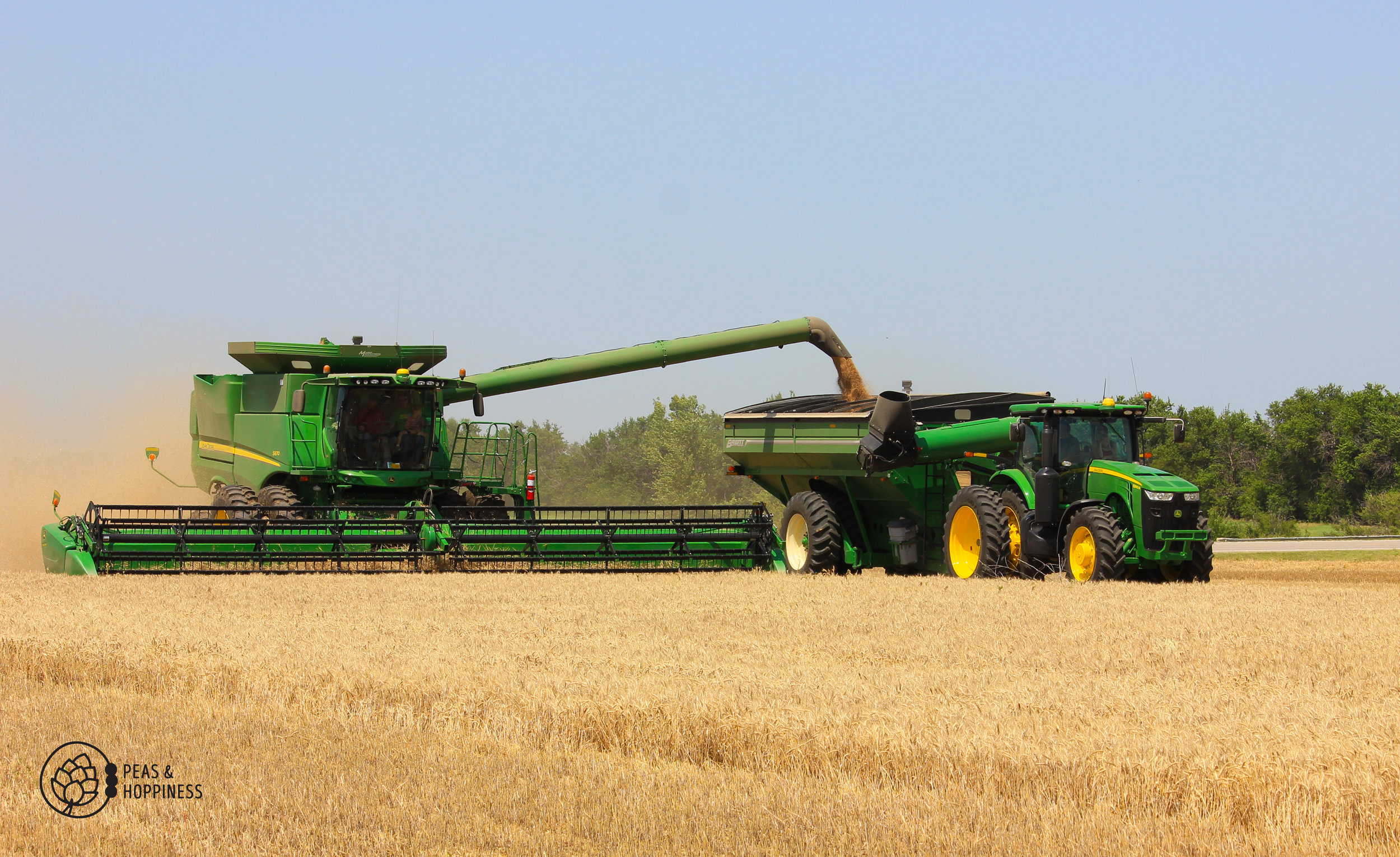
As long as there is wheat to harvest there will be a farmer to cut it <3
Times, they are a-changing. But that’s the way it’s always been. The world turns, the tide ebbs and flows, and farmers plant and harvest. Where do you see American agriculture going?
With love, from Peas and Hoppiness.